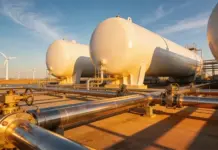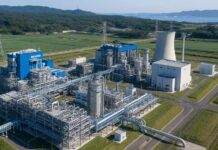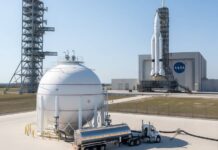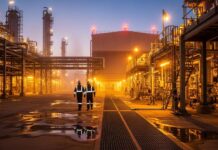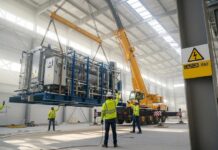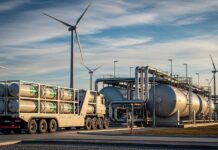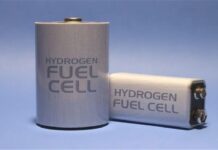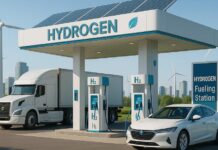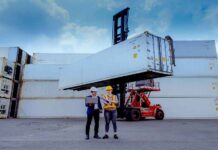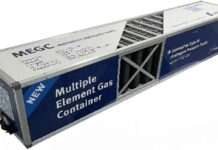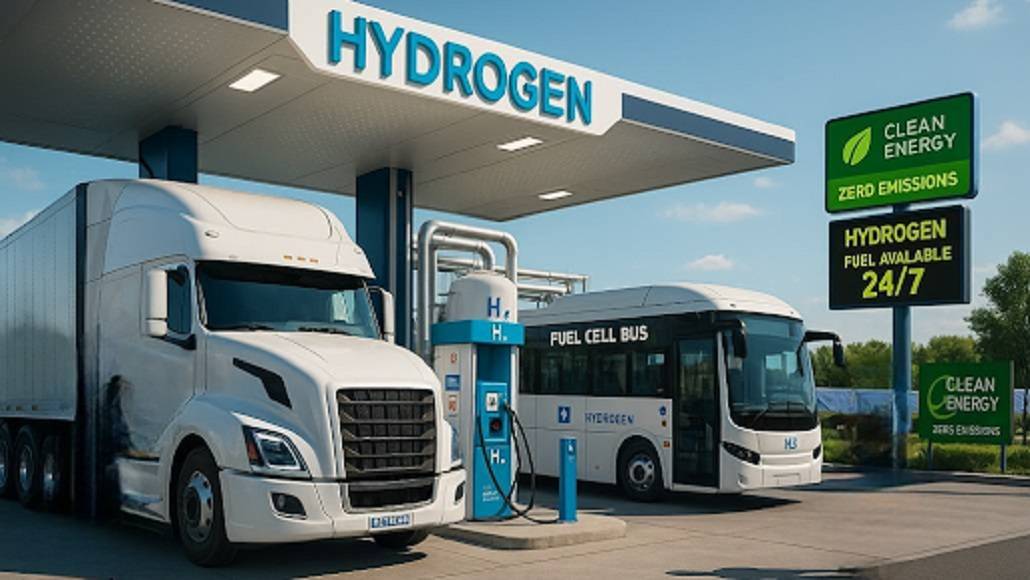As the global energy landscape continues to evolve, hydrogen has emerged as a cornerstone in the transition toward cleaner and more sustainable fuel alternatives. While hydrogen has been indicated is an important fuel for decarbonizing light-duty vehicles, hydrogen’s potential to fuel heavy-duty transportation is gaining considerable interest. With long-haul trucks and buses, hydrogen fuel cell vehicles (HFCVs) are set to shape the future of heavy-duty transport. However, this transformation hinges on one pivotal factor: the development and scaling of hydrogen refueling infrastructure.
Hydrogen refueling stations (HRS) are the pillar of the hydrogen infrastructure. Not only are they critical to the mass rollout of HFCVs, but also to the realization of the ambitious vision of governments and industries to become net-zero in carbon emissions. Nevertheless, ramping up hydrogen refueling infrastructure to address the singular requirements of heavy-duty vehicles poses tremendous challenges, creative solutions, and visionary approaches.
The Unique Demands of Heavy-Duty Hydrogen Refueling
Heavy-duty hydrogen vehicles are in a highly specialized environment compared to light-duty hydrogen vehicles that are mainly targeting individual consumers and operating at shorter travel ranges. No doubt, a light-duty hydrogen vehicle will follow a different operational requirement than a heavy-duty hydrogen vehicle, considering that heavy-duty vehicles are designed for more distance, bigger loads, and a stronger operating cycle. This comes with unique demands on refueling infrastructure.
One of the important factor, is the amount of hydrogen required per refueling cycle. Heavy-duty transport, freight trucks and buses require relatively larger volumes of hydrogen compared to passenger vehicles. This presents challenges related to storage capacity, dispensing rates, and station required for the reduction of vehicle downtime. This includes increased station throughput, greater dispensing rates, and storage capacity to avoid needless vehicle downtime. Heavy-duty hydrogen refueling stations need to have sophisticated compressors, large-capacity storage tanks, and low-waste distribution technology in order to meet these needs.
The other very important consideration is geography. In contrast to passenger cars, which are serviced at normal gas stations or hydrogen stations in urban areas, heavy trucks tend to move along highways, logistics centers, and industrial areas. This requires a significant method of selecting the siting of hydrogen fueling stations in order to make them accessible in congestion corridors and transport intermodal nodes.
Current State of Hydrogen Refueling Infrastructure
The global hydrogen refueling network has advanced significantly, yet it is still in its infancy, especially for heavy duty. Presently, hydrogen refueling stations are largely concentrated in regions that are pioneers of the clean energy shift, such as some areas in Europe, Asia, and North America. The majority of these stations were initially intended to supply hydrogen to light-duty vehicles, and this reflects their suitability to be adapted to the heavy-duty market.
Much of the challenge of scaling hydrogen fueling stations can be traced to limitations of infrastructure, such as production, storage, and transportation of hydrogen. For example, centralized hydrogen production facilities usually require long-distance transportation to fueling stations, which complicates and costs the supply chain. More decentralized production techniques, like onsite electrolysis powered by renewable energy, can address these problems because they manufacture hydrogen locally, eliminating the need for shipping.
Furthermore, the primary barrier continues to be the increased capital costs associated with building and operating hydrogen refueling stations. Unlike traditional filling stations, HRS need specialized equipment and technology, including hydrogen compressors, ultra-high-pressure storage tanks, and sophisticated safety measures. These considerations raise the considerable initial expenditure needed for station development.
Table: Key Challenges in Scaling Hydrogen Refueling Stations
| Challenge | Impact on Heavy-Duty Refueling |
| High Upfront Investment | Limits the pace of station deployment and scalability. |
| Infrastructure Limitations | Impacts production, storage, and transportation efficiency. |
| Location Challenges | Difficulty in identifying and securing strategic station locations. |
| Storage and Dispensing Capacity | Insufficient capacity for heavy-duty vehicle fuel requirements. |
| Cost of Hydrogen Production | Affects station economics and overall competitiveness. |
Technological Innovations Driving Scalability
Expanding hydrogen refueling stations is difficult, but new technology is making it possible to overcome these obstacles. The creation of scalable hydrogen infrastructure is moving at a fast pace by the combination of new technology and collaboration with different industry participants.
- Advanced Hydrogen Storage
Advances in hydrogen storage technology are among the most important developments toward scalability. High-pressure tanks and cryogenic systems are being optimized to hold more hydrogen in smaller footprints. In heavy-duty operations, these technologies are providing quicker refueling and greater throughput, allowing the vehicle to be out on the road more and refueling less.
- High-Capacity Dispensers
Hydrogen dispensing for heavy-duty trucks involves specialized equipment that can sustain ultra-high pressures. New hydrogen dispensers are currently being designed to allow for faster dispensation rates while still maintaining accuracy and safety. These new dispensers will accommodate the specific needs of numerous refueling cycles for fleets of heavy-duty vehicles.
- Integration with Renewable Energy
Green hydrogen, which is produced from renewable energy sources like solar and wind, is beginning to gain traction as a practical choice for environmentally friendly refueling. Hydrogen can be created on-site with electrolysis devices, which reduces the need for long supply chains and centralized manufacturing facilities. This lowers costs and supports sustainability objectives.
- Digitalization and IoT
The operational efficiency of hydrogen refueling stations is increasing through the integration of digital technology and monitoring systems, including Internet of Things (IoT) sensors and predictive maintenance platforms. An Internet of Things-enabled hydrogen station can monitor storage levels, monitor vehicle usage, and suggest the optimal times to refuel based on usage and availability. Platform safety is enhanced by monitoring and triggering early detection of potential faults.
Policy and Collaboration for Scaling Hydrogen Infrastructure
In order for governments, industry stakeholders, and technology developers to begin the process of scaling hydrogen refueling stations, their collaboration is paramount. The end results of policy formation and incentives will ultimately encourage more stations to deploy and more heavy-duty hydrogen vehicles to hit the road.
Subsidies and tax credits for station building, and incentives to fleet operators to switch to hydrogen fuel cell vehicles, provide an economic incentive to scale infrastructure. For transportation and logistics companies, regional regulatory harmonization facilitates cross-border operations by ensuring that hydrogen refueling stations meet the same safety and performance standards.
Collaboration between the public and business sectors is also necessary for the expansion of hydrogen infrastructure. Shared investments, lower risk, and quicker innovation are the results of multi-party collaborations between governments, universities, and businesses. Partnerships between hydrogen makers and fleet operators, for instance, can commission specialized refueling stations designed to meet the needs of heavy-duty trucks.
Sustainability and Long-Term Vision
The scalability of hydrogen refueling stations is not only an engineering problem but also a sustainability one. Since heavy-duty transportation has a large amount of global greenhouse gas emissions, so it’s necessary to move towards hydrogen-powered vehicles for a low-carbon future.
Hydrogen refueling stations may be the cornerstone of larger renewable energy ecosystems. Their incorporation of energy storage, grid balancing and distributed hydrogen production can help repurpose the stations from simply refueling vehicles to multi-purposed facilities that incorporate optimized resource utilization while balancing their overall environmental footprint. Hydrogen has value above and beyond transportation applications such as for industrial processes and energy storage, and leveraging hydrogen use in other applications increases its overall value proposition.
Conclusion
Hydrogen refueling stations are the key in the transition to decarbonizing heavy-duty transportation. With increasing demand for hydrogen fuel cell vehicles, scalable, efficient, and strategically positioned refueling infrastructure is a critical need. The hurdles of high upfront cost, infrastructure constraints, and technology readiness need to be tackled by all stakeholders together.
Thanks to technological developments, supportive legislation, and collaborative collaborations, the concept of a strong infrastructure for hydrogen refueling has begun to take shape. Building massive hydrogen infrastructure to support heavy-duty transportation will not only solve immediate logistical problems but also further the larger objective of a sustainable and decarbonized future. In order for business and society to transition to a cleaner future powered by hydrogen, refueling stations will be essential to this revolutionary transformation as society progresses toward a hydrogen economy.


